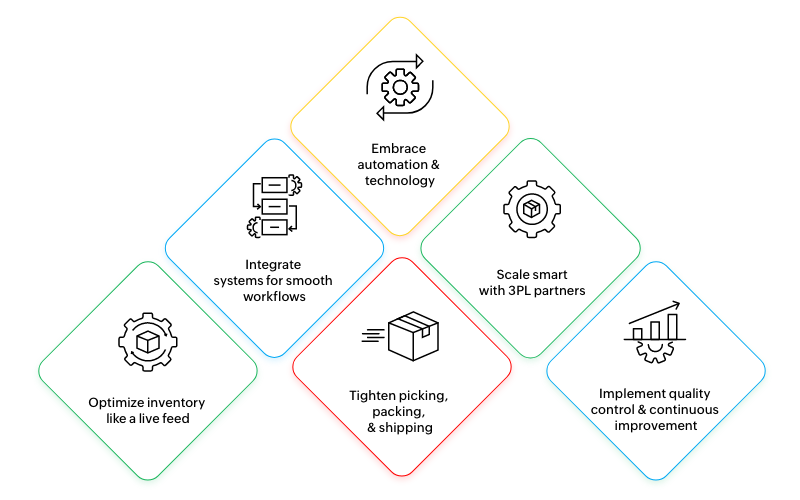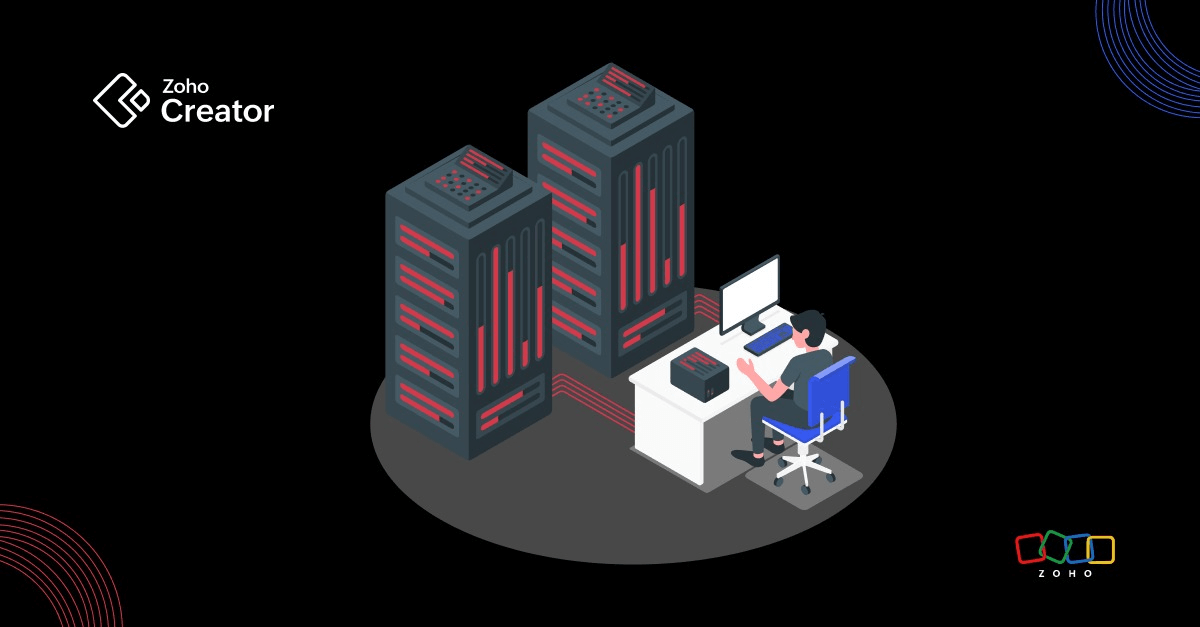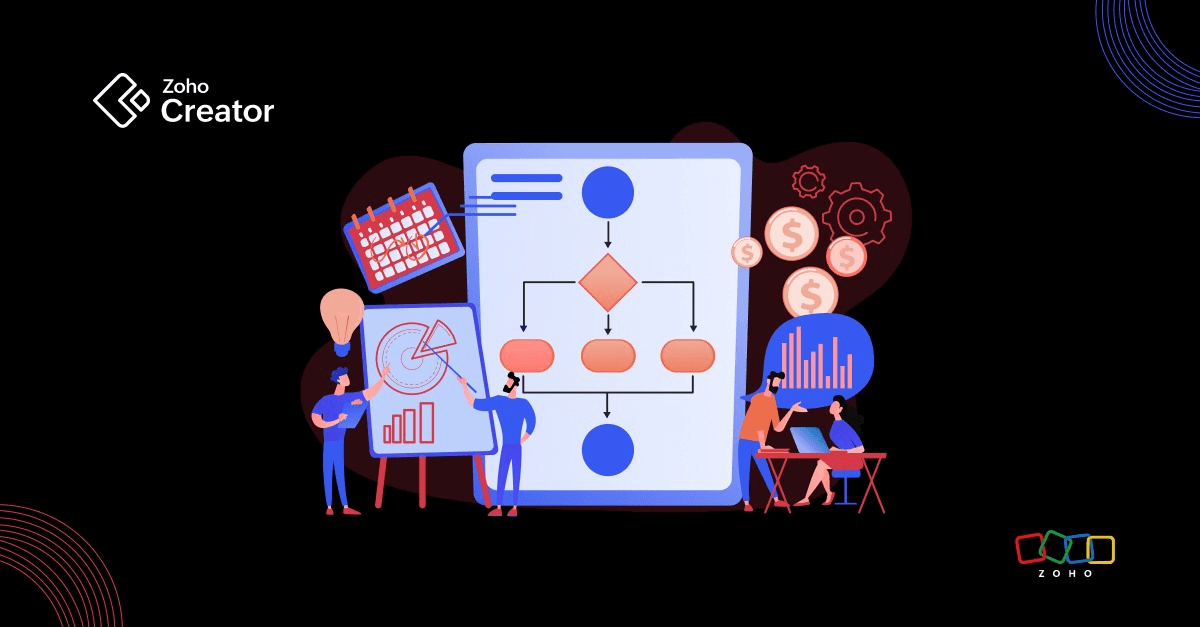- HOME
- Know Your Tech
- How to simplify logistics: Streamlining the order-to-delivery process
How to simplify logistics: Streamlining the order-to-delivery process
- Last Updated : June 18, 2025
- 369 Views
- 11 Min Read
Logistics management is the backbone of every order-driven business. Whether you're shipping handmade candles across states or managing inventory for an online electronics store, getting products from warehouse to doorstep is no small task.
Yet the reality is that things often don’t go as planned.
According to recent reports, nearly 60% of small and mid-sized businesses in the U.S. say supply chain delays have cost them up to 15% in lost revenue. These aren't just numbers; they reflect customer complaints, delayed payments, lost time, and mounting pressure on teams already stretched thin.
If you’re a business owner, you’ve probably seen how small gaps in the process can snowball into bigger problems—missed deliveries, duplicated efforts, wrong inventory counts, and more.
The good news? You don’t need to overhaul everything. Automating parts of your logistics management and streamlining how orders move through your system can improve how your business runs, without the chaos. In this blog, you’ll learn how to cut down delays, reduce manual work, and set up your operations for faster fulfillment, better customer experience, and long-term results.
What is logistics management?
Before we jump into the “how,” let’s take a moment to understand the “what.” Logistics management isn’t just about trucks, warehouses, and shipping labels; it’s about keeping every moving part of your supply chain connected, predictable, and on schedule.
At its core, logistics management is the process of planning, executing, and monitoring the movement of goods from raw materials to finished products until they reach the customer. It's about making sure the right product reaches the right place at the right time, without unnecessary delays or overhead.
Let’s break it down into what logistics management typically covers:
Functions of logistic management
1. Order processing
The journey starts when a customer places an order. Logistics management ensures that the order is recorded accurately, verified, and passed along to the right teams.
Example: When a customer buys a T-shirt online, the order system should immediately notify the warehouse to pick, pack, and ship it. If this handoff is manual, errors are more likely. With automation, it happens instantly and reliably.
2. Inventory management
This involves tracking stock levels, updating counts in real time, and preventing overstocking or stockouts.
Example: A furniture store syncing its warehouse inventory with its online catalog avoids selling items that are no longer in stock, improving both customer experience and internal efficiency.
3. Warehousing
Goods need to be stored in a way that allows for quick and accurate picking, packing, and shipping. Logistics systems help optimize warehouse layouts, storage bins, and retrieval workflows.
Example: A large ecommerce company uses automated shelving and barcode scanning to speed up order fulfillment, reducing errors and improving delivery times.
4. Transportation management
Choosing the right carrier, planning delivery routes, and tracking shipments all fall under this bucket. It’s where delays often happen, so getting this part right is essential.
Example: A company using a centralized dashboard to view all in-transit deliveries can respond faster if a shipment is stuck in traffic or weather-affected.
5. Returns and reverse logistics
Customers sometimes return products, and managing this smoothly is just as important. Logistics management covers how returns are collected, inspected, and restocked or discarded.
Example: An electronics retailer implements a streamlined return process that quickly inspects and refurbishes returned devices. This enables faster resale and reduces losses.
Types of logistics management
Logistics isn’t one size fits all. Different types handle different stages of the product lifecycle, and depending on your business model, you might use one or all of them.
1. Inbound logistics
This involves receiving goods, raw materials, or parts from suppliers. It’s the first mile of your supply chain.
Example: A bakery chain sourcing flour and packaging from local vendors needs reliable inbound logistics to avoid running out during peak demand.
2. Outbound logistics
This refers to the delivery of finished goods to customers or retailers.
Example: An ecommerce brand shipping sneakers to customers across states relies on outbound logistics to ensure timely and accurate delivery.
3. Third-party logistics (3PL)
Instead of handling it in-house, some businesses outsource logistics to providers who manage warehousing, transport, and fulfillment.
Example: A DTC skincare brand might partner with a 3PL to store products in multiple fulfillment centers and ship from the location closest to the customer.
4. Reverse logistics
This is the flow of products back into the system—returns, recycling, or repairs.
Example: An electronics company offering device trade-ins needs a reverse logistics plan that covers pickup, inspection, and processing.
Logistics management vs. supply chain management: What’s the difference?
These two terms often get used interchangeably, and it’s easy to see why. They both deal with getting products from one place to another. But logistics management is actually a part of the larger supply chain puzzle.
Supply chain management (SCM) looks at the big picture—sourcing raw materials, manufacturing, logistics, distribution, customer service, and everything in between. It’s about building a strategy to deliver value from start to finish.
Logistics management, on the other hand, focuses on the actual movement and storage of goods within that broader system. It's the day-to-day engine that keeps things moving.
Think of it this way:
If supply chain management is the orchestra, logistics is the rhythm section, keeping everything in time and on beat.
Here’s a quick breakdown to illustrate the distinction:
Aspect | Supply Chain Management | Logistics Management |
Scope | Broad, strategic | Specific, operational |
Focus | Entire lifecycle: sourcing to delivery | Movement and storage of goods |
Activities | Procurement, production planning, customer service, risk management | Transportation, warehousing, inventory, order fulfillment |
Goal | Optimize the full chain for cost and efficiency
| Ensure smooth flow of goods |
Both are important, but when it comes to streamlining the order-to-delivery process, logistics management is where the real improvements begin.
Understanding the order-to-delivery process
The order-to-delivery process is your customer’s experience in motion. From the moment someone clicks Buy to the moment the package reaches their doorstep (and sometimes, makes its way back), this process is where trust is built or broken. For different businesses, this process forms the backbone of customer satisfaction and operational efficiency.
What happens between click and delivery?
Let’s break down each stage of the process and how it impacts both your operations and your customer relationships.

At a glance, the order-to-delivery process covers:
Order placement: This is the moment of conversion. A customer finds what they need, adds it to their cart, and checks out.
Inventory management: As soon as the order lands, your inventory system springs into action. It verifies product availability, ideally in real time.
Order processing: With inventory confirmed and payment received, the order is routed for fulfillment. This includes tagging the right warehouse, generating invoices, and preparing instructions for the pick and pack team.
Picking and packing: Warehouse staff pick the items and pack them securely.
Shipping: The packed order is handed over to your delivery partner. Here, speed and visibility matter most.
Delivery: This is the customer’s moment of truth. A timely and undamaged delivery earns trust, while delays or damage can hurt your brand's reputation. Companies that make delivery seamless often see higher repeat purchases and stronger loyalty.
Returns: Returns are no longer a maybe—they’re part of the experience. A hassle-free return process boosts buyer confidence and even lifts conversions.
Each of these stages shapes how your customers perceive your brand. And when even one step breaks, the entire experience suffers. In the next section, we’ll explore why traditional logistics systems often fail to meet these expectations and what you can do about it.
Why traditional logistic management falls short
Many businesses that grew fast or operate across multiple regions still manage logistics using spreadsheets, emails, phone calls, or standalone software. While these methods might have worked early on, they don’t hold up as operations scale.
When deliveries are late, orders go missing, or customers are left waiting for updates, the root cause is often the same: a few recurring issues in the order-to-delivery workflow. These hurdles show up across industries and often become more visible as businesses grow.
Where traditional logistics breaks down
Siloed systems: Inventory data in one system. Shipping in another. Orders coming in from multiple channels. Without a connected view, teams waste time switching between platforms, updating records manually, or reconciling errors. This slows things down and increases the risk of costly mistakes.
Limited visibility: When teams can’t track where an order is at any given moment, whether it’s stuck in processing or delayed in transit, they can’t step in proactively. This lack of visibility makes it harder to answer customer questions, resolve issues, or improve internal workflows.
Manual processes: From updating order status to coordinating with delivery partners, manual work creates bottlenecks. It eats into valuable hours, increases the chance of human error, and slows down fulfillment during peak seasons when speed matters most.
Inconsistent customer experience: Customers today expect real-time updates, accurate delivery estimates, and easy returns. Traditional systems can’t always keep up. When there’s a gap between what’s promised and what’s delivered, it shows.
Poor scalability: What works for 50 orders a week won’t work for 500 or 5,000. Traditional methods don’t scale easily. Teams end up hiring more people or adding more software just to keep things running. It becomes costly, chaotic, and unsustainable.
These gaps create internal headaches and show up in lost sales, late deliveries, and rising customer churn. By identifying these issues early, you can begin to make practical changes that speed up operations and create better experiences for customers. That’s where smarter logistics management can make all the difference.
In the next section, we’ll explore simple ways to address these problems and improve your logistics from the ground up.
Strategies to streamline the order-to-delivery process

So far, we’ve seen how outdated tools and disconnected systems can slow down logistics and frustrate customers—but these challenges aren’t permanent. Businesses are turning things around, often by taking a hard look at their processes and using technology to remove the friction.
Let’s start with the most impactful shift: automation.
1. Embrace automation with logistics management software
Manual coordination might work for a while. But as order volumes grow, so does the complexity of tracking inventory, processing shipments, and keeping customers informed. That’s where automation helps.
By automating repetitive tasks like order entry, invoice generation, and inventory updates, you reduce errors, save time, and stay consistent across every stage of delivery.
Adopt logistics management software
Think of it as the digital nerve center that brings your entire order-to-delivery workflow under one roof. The right solution helps businesses manage inventory, track orders, schedule deliveries, monitor returns, and access real-time updates, all through a centralized dashboard.
Let’s look at a real-world example. Cemblocks, a leading concrete products supplier in South Africa, was struggling with manual processes in inventory tracking, asset maintenance, and order management. Their team handled everything on paper, from quotations to sales, invoicing, and dispatch, which slowed them down and made tracking difficult. As the business grew, so did the risk of errors and delays.
They switched to Zoho Creator to build custom logistics and order management apps that fit their exact workflow.
Here’s what changed:
End-to-end digital control: From the moment a quotation is created to the final delivery, every step is now tracked within the Zoho Creator app.
Real-time visibility: The app syncs customer data, truck details, order specifics, and delivery notes in one place, reducing the back-and-forth between departments.
Inventory management: It enabled real-time tracking of raw materials and finished products, ensuring optimal stock levels and automated reporting.
Order management: The app streamlined customer order processing with features like real-time order status tracking, automated invoice generation, and customer notifications via WhatsApp.
Logistics system: It improved fleet scheduling and job card tracking, integrated with truck scales for accurate load weights, and keeps a comprehensive maintenance history for all equipment.
The result? Faster deliveries, fewer mistakes, and a scalable system that keeps pace with growing demand. Cemblocks enhanced operational efficiency, reduced manual errors, and improved customer satisfaction.
2. Integrate systems for smooth workflows
One of the most common causes of order delays are systems that don’t talk to each other. You’ve got your inventory on one platform, orders on another, and shipping on a third—and none of them are fully in sync. Every handoff becomes a potential drop.
When systems are integrated, through APIs or unified logistics platforms, information flows automatically. Inventory updates the second an order is placed. Fulfillment gets triggered instantly. Customers get notified in real time: no chasing, no guesswork.
It’s the difference between a relay race with dropped batons vs. a seamless pass. Integration isn’t just a tech upgrade; it’s a mindset shift toward efficiency.
3. Scale smart with 3PL partners
Not all businesses can manage their own warehouses, fleets, and delivery ops. That’s where third-party logistics providers come in, offering ready-to-go infrastructure and regional reach.
But working with 3PLs isn’t just about outsourcing—it’s about co-creating a seamless experience. To make this work, your systems need to connect by sharing order data, delivery updates, and tracking info in real time.
With the right shipping software, you can bring 3PL partners into your existing workflow, reducing back-and-forth while staying in control of the customer experience. That means fewer delays, faster fulfillment, and less stress during peak season chaos.
4. Optimize inventory like a live feed
Outdated stock data is one of the fastest ways to lose a sale or, worse, a customer. When systems still rely on manual updates or scattered spreadsheets, you get stockouts, overselling, and broken trust.
Modern inventory management tracks levels in real time, syncs across locations, and even predicts demand using sales trends. So when 100 people click Buy, your system knows whether you can deliver or whether it's time to restock.
Approaches like just-in-time (JIT) and vendor-managed inventory (VMI) help maintain stock levels based on real demand. These methods reduce waste and storage costs while keeping popular items available.
Zoho Creator’s custom inventory management lets you customize inventory rules that align with their needs, without relying on rigid, one-size-fits-all software.
5. Tighten picking, packing, and shipping
This is where logistics meets speed. The warehouse floor can be your biggest bottleneck or your biggest opportunity. Smart picking routes reduces wasted steps, barcode scanners cut down on mistakes, and packing stations optimized by weight, size, or fragility can increase both speed and safety.
Shipping tools that compare rates, print labels, and schedule pickups in one go are no longer a bonus—they’re the baseline. The goal is simple: the right product, packed well, and sent out fast.
6. Implement quality control and continuous improvement
Even the best logistics teams make mistakes. Establishing quality checks at key stages, such as order verification, final inspection, and post-delivery feedback, helps reduce returns and improve service consistency.
Tracking performance through key metrics like on-time delivery, order accuracy, and return rates can also show where processes are slipping.
Bringing it all together
If your order-to-delivery process feels slower than it should be, you’re not alone, and you’re not stuck either. As we’ve seen, most bottlenecks come down to preventable issues: manual errors, disconnected systems, poor visibility, and tools that can’t keep up with demand.
From adopting logistics management software and automating workflows to syncing inventory systems and improving shipping operations, the solutions are practical, measurable, and well within reach.
That’s where Zoho Creator steps in—empowering you to digitally transform your entire order-to-delivery cycle. From receiving and processing customer orders to assigning drivers, tracking shipments in real time, and updating delivery status, everything happens in one unified, automated system. Check out Zoho Creator’s custom logistics management solution today!
FAQs
1. What is logistic management?
Logistics management involves planning, executing, and monitoring the movement of goods from suppliers to customers, ensuring timely deliveries, efficient operations, and optimal use of resources.
2. What is 3PL and 4PL?
3PL (third-party logistics) handles outsourced logistics like warehousing and shipping, while 4PL (fourth-party logistics) oversees the entire supply chain, including managing multiple 3PLs on your behalf.
3. Why is logistics management important?
Effective logistics management reduces costs, minimizes delays, improves customer satisfaction, and ensures smoother operations across inventory, order fulfillment, and delivery processes.
 Stephen
StephenStephen is a product marketer at Zoho Creator. An avid writer, he plies his trade evangelizing low-code during the day and pens songs at night. Sneakerhead and sushi enthusiast too.



